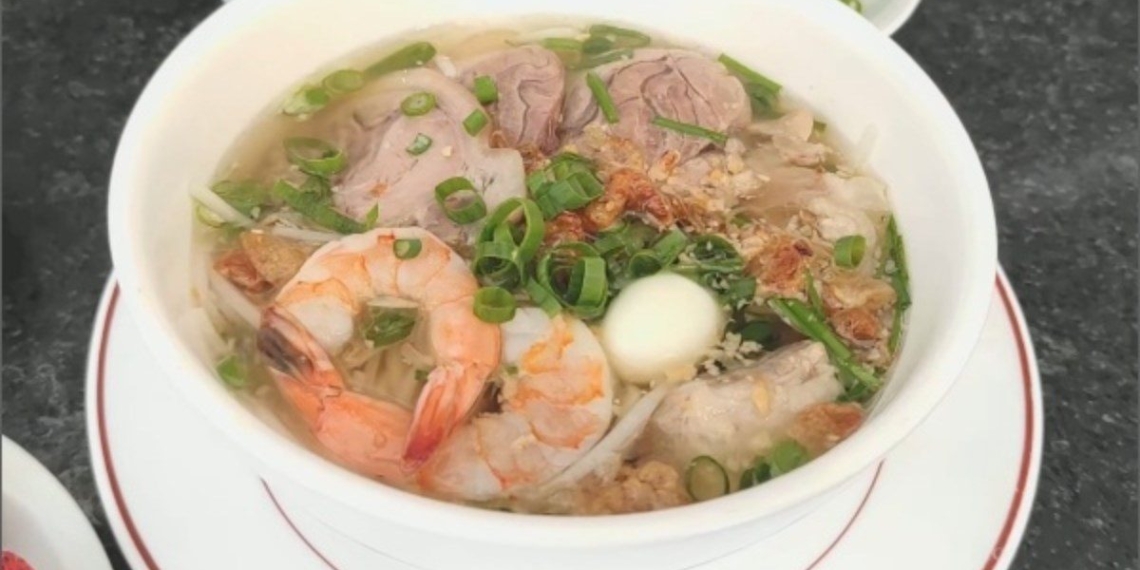-
Preparation
30 minutes
-
Cooking
1 hour 30 minutes
-
Difficulty
Easy
For a long time, whenever the weather turns cold and biting, the children of the S-shaped land always have the habit of seeking a hot, appealing bowl of Nam Vang noodle soup. However, did you know that this soupy dish actually originates from Phnom Penh – Cambodia? On this occasion, let’s cook with TasteVN to find the “original” flavor of Cambodian Nam Vang noodle soup!
Ingredients for Cambodian Nam Vang Noodle Soup Serves 4 people
Dried noodle 375 gr (1 pack) Pork bones 1 kg Pork trotters 0.5 kg Spare ribs 500 gr Pig’s tongue 1 piece Pig liver 250 gr Pig heart 1 piece Ground pork 300 gr Fresh shrimp 200 gr Dried squid 50 gr (1 piece) Quail eggs 20 eggs White radish 250 gr (2 pieces) Onion 1 bulb Green onion 10 stalks Horn chili 4 pieces Ginger 1 piece Garlic 2 bulbs Fried onion 6 tablespoons Fried garlic 3 tablespoons Vinegar 150 ml (vinegar) Tomato sauce 3 tablespoons Soy sauce 10 tablespoons Fish sauce 8 tablespoons Oyster sauce 3 tablespoons Salt/ sugar a little
How to choose fresh ingredients
How to choose fresh ribs
- Fresh and delicious ribs are those that have a bright pink color, without any darkening or unusual tiny spots on the surface.
- It is advisable to buy ribs with small and flat bones, as they will have more meat when cooked compared to other types.
- Avoid buying ribs that are slimy and have a strong fishy smell, as this indicates that the ribs have been left too long and should not be eaten.
How to choose fresh pig trotters
- Fresh pig trotters are usually the hind trotters, and the hooves should be intact, not broken.
- Pressing the meat with your hand should feel soft but firm, with good elasticity and not too mushy.
- Avoid buying pig trotters that have an unusual fishy smell and the meat has turned pale green, as this indicates spoiled trotters that can affect health.
How to choose fresh pig liver
- Fresh pig liver always has a bright red color; if the liver appears too dark, it is spoiled and should never be purchased.
- The surface of the liver should be smooth and shiny, not too rough or have any unusual nodules on the surface.
- Gently press the pig liver; it should feel smooth and have good elasticity, not too hard or excessively watery.
- Avoid buying pig liver if it has a strong fishy smell, as this could indicate that the liver has been left too long and should not be eaten.
How to choose fresh and delicious pig hearts
- Fresh and delicious pig hearts are those that have a dark red color, a smooth, shiny surface, and may have a thin membrane attached to the heart muscle.
- Gently press with your hand to feel that the heart has a good softness and elasticity, not too mushy.
- Avoid buying pig hearts that are too dark, even with yellow and slimy fluids leaking out, as these are spoiled hearts.
How to choose fresh and delicious pig tongues
- Fresh and delicious pig tongues are bright red, rosy, not darkened or dull, and the part near the throat should be white.
- Pressing with your hand should reveal that the pig tongue has a distinct firmness and good elasticity, not too mushy.
- Avoid buying pig tongues that emit an unusual fishy smell, as these are spoiled and should not be used.
How to choose fresh and delicious shrimp
- Fresh and delicious shrimp usually have a clear outer shell, while dead shrimp will have dark or unevenly colored shells.
- When holding the shrimp, it should feel strong, swim well, and jump far; if the shrimp is no longer moving, it should definitely not be purchased.
- The shell joints between the head and body should be flexible, not separated, and still tightly attached to each other; observing the shrimp’s tail, it should be folded, not spread out.
- Avoid buying shrimp that feel mushy, slimy, and have a curved body, as these are shrimp that have been left too long and will not taste good.
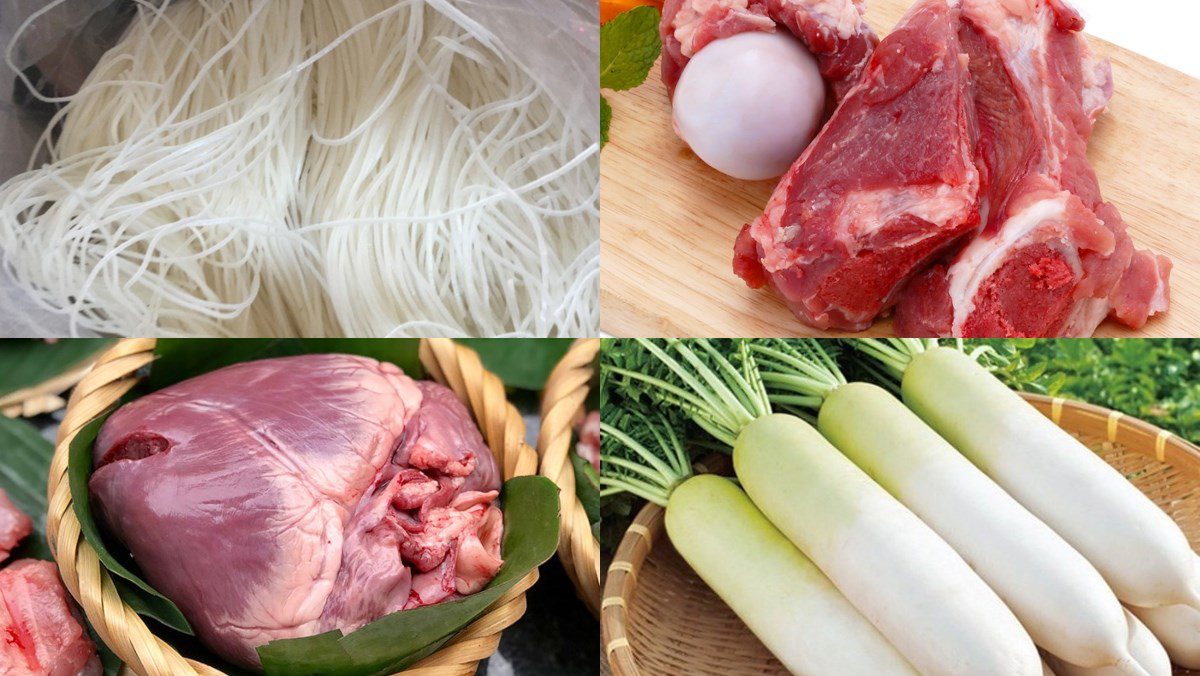
How to prepare Cambodian Nam Vang Hu Tieu
-
Prepare the pork
First, for the pork bones, pig’s trotters, and spare ribs you bought, rub salt all over the surface of the meat for 3 – 5 minutes, then wash it again with clean water and let it drain.
At the same time, put a pot on the stove with 1.5 liters of water and bring it to a boil over high heat. When the water is boiling, add the pork bones and blanch them for about 3 – 5 minutes, until you see foam rising to the surface, then remove the bones, wash them with water until clean, and let them drain.
Using the same pot, continue to blanch the pig’s trotters and spare ribs in the same manner.
For the pig’s tongue and liver, rub a little salt on the surface of the meat for 3 – 5 minutes, then use a knife to scrape off the slime from the pig’s tongue, then wash it several times with clean water and let it drain.
For the pig’s heart, use a knife to cut a line on the side, removing any remaining dirty blood inside, then rub a little salt on the surface of the meat for a few minutes, and wash it again 1 – 2 times with clean water, letting it drain.
Effective methods to eliminate the smell of pork
- Method 1: The most common method is to blanch the pork in boiling water for about 3 – 5 minutes.
- Method 2: Use a mixture of salt and white wine to rub all over the surface of the meat for 3 – 5 minutes.
- Method 3: You can also soak the pork in rice washing water for 15 minutes.
See details: Effective methods to eliminate the smell of pork
How to properly clean pig liver
- Method 1: Soak the pig liver in vinegar diluted for about 30 minutes.
- Method 2: Additionally, you can also soak the pig liver in fresh milk for 30 minutes.
- Method 3: The simplest way is to soak the pig liver in salt water diluted for 1 – 2 hours.
See details: How to properly clean pig liver

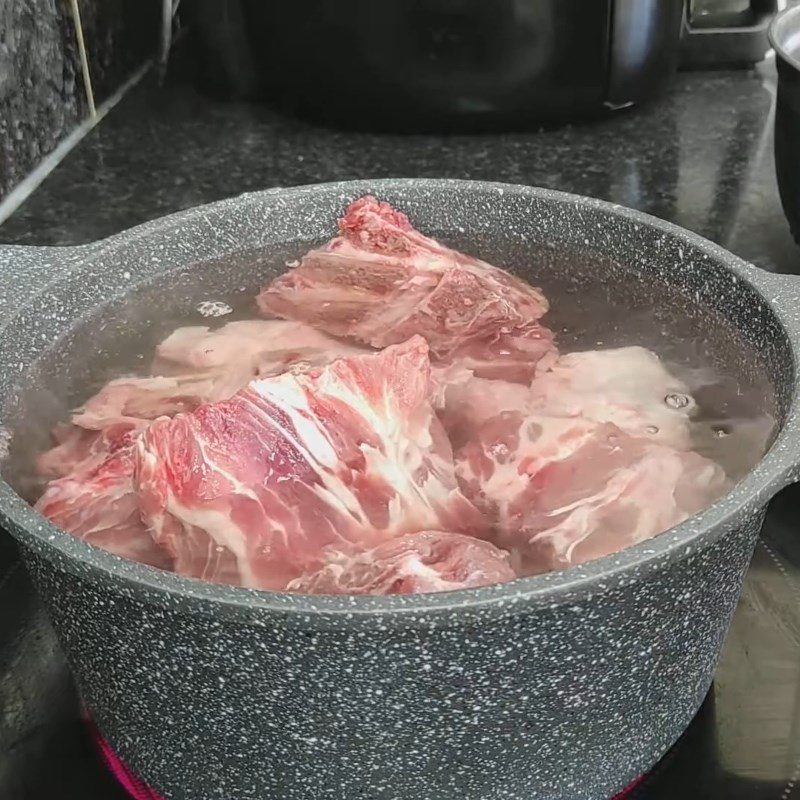
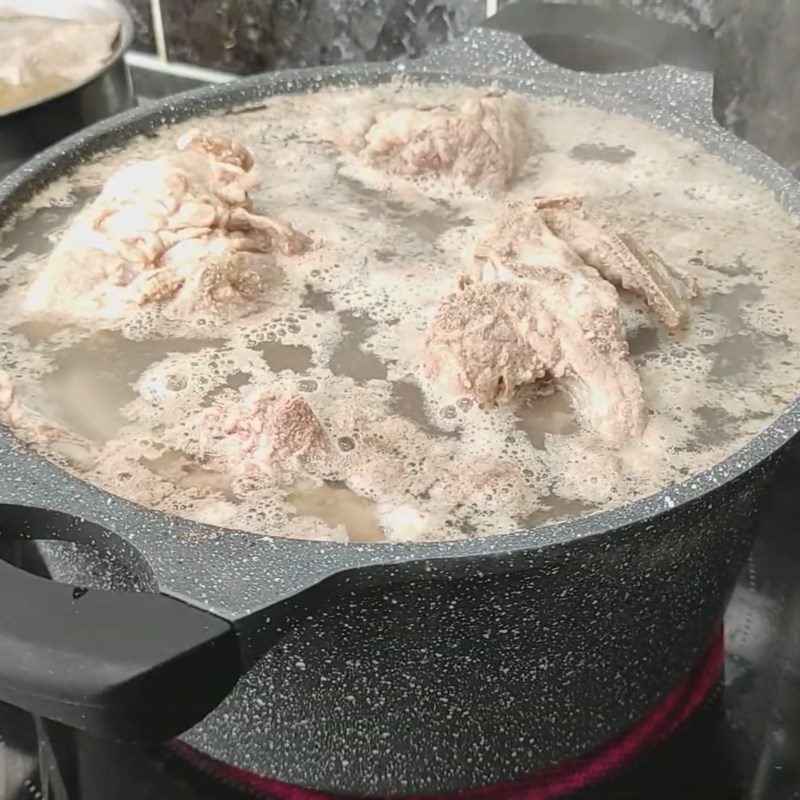
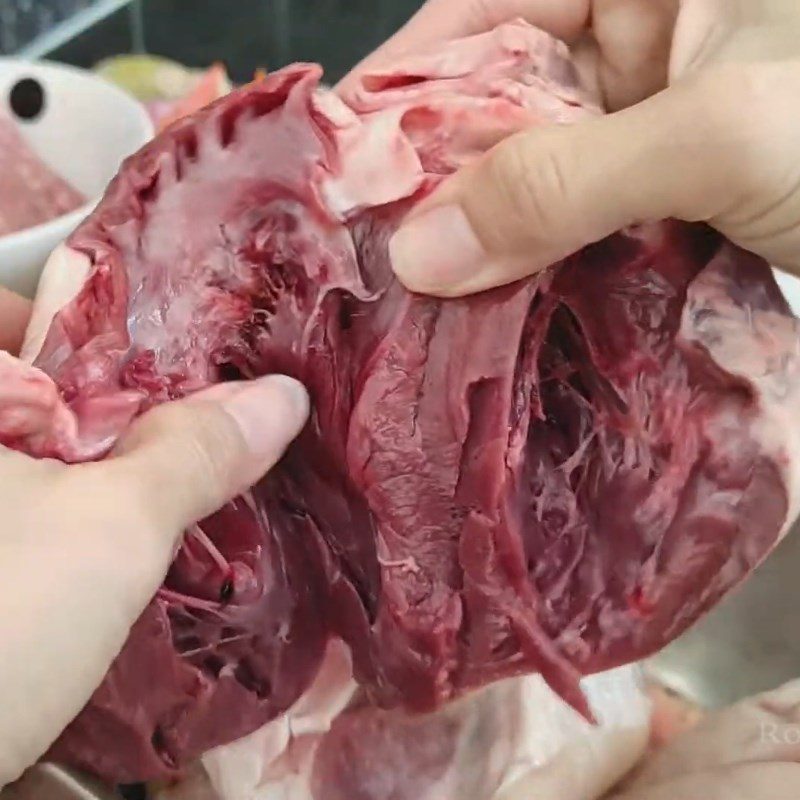
-
Prepare other ingredients
Shrimp should be rinsed with water to clean, drained, then use scissors to remove the head, peel off the shell, and also remove the thread along the back.
White radish should have its stems removed, use a peeler to peel, rinse directly under running water to clean, drained, then cut into slices.
Green onions should have their roots removed, washed clean, drained, then chopped finely. For ginger, peel it, wash it clean, drain it, and slice it thinly.
Onions just need to be peeled. Horned chilies should have their stems removed, washed clean, drained, and cut diagonally thin. For garlic, peel it, then mince it finely.
How to quickly remove the shrimp’s back thread
- Method 1: First, turn the shrimp over, use your hands to peel back both sides of the shrimp’s head while holding firmly at the joint between the body and the head, then gently pull out to remove the thread.
- Method 2: Alternatively, you can turn the shrimp upside down, gently bend the head from bottom to top, then press lightly to push out the dirty part of the shrimp. Next, grab the thread and pull it out.
-3.jpg)
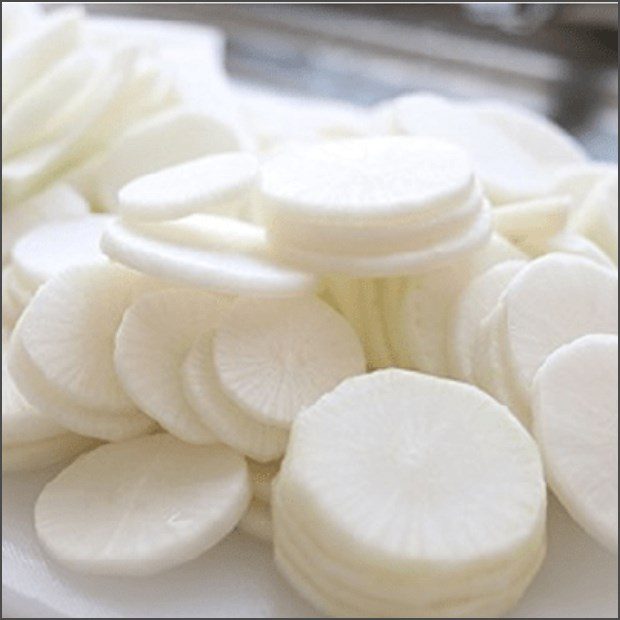
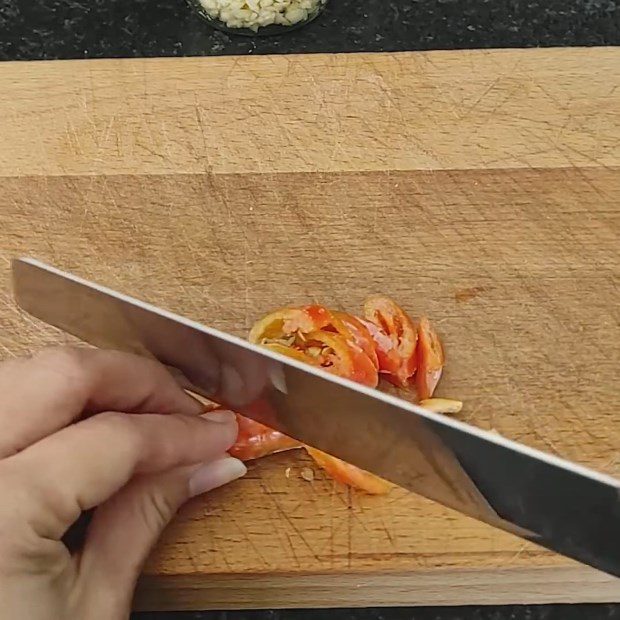
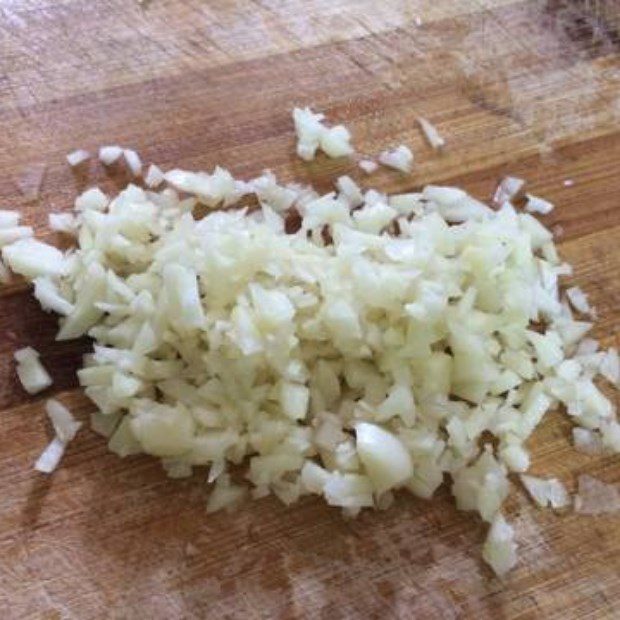
-
Boil the ingredients
After preparing the ingredients, place a pot on the stove with 500ml of water, 1 teaspoon of salt, and the drained pork liver, and proceed to boil over medium heat for about 10 minutes.
When the water boils, continue to boil for another 7 – 10 minutes, until the pork liver is tender, then turn off the heat, and remove it to a bowl of ice water for 5 minutes, then transfer to a plate to drain.
Place another pot on the stove with 1.5 liters of water and bring it to a simmer. When the water starts to bubble, add 2 teaspoons of salt, thinly sliced ginger, 1 onion, 1 pig’s tongue, 1 pig’s heart, and the entire pork knuckle, and boil for 15 minutes.
When the pig’s tongue and heart are tender, remove them to a bowl of ice water for 5 minutes, then transfer to a plate to cool.
At the same time, continue to boil the pork knuckle for another 15 minutes. When the pork knuckle is tender, turn off the heat, soak it in ice water for 5 minutes, and then transfer to a plate.
Take 200ml of the water used to boil the pork knuckle and place it in a new pot with 2 tablespoons of fish sauce, then put it on the stove to cook over medium heat for about 5 – 7 minutes.
When the water is hot, add all the ground pork, using a spoon to stir well, and boil for 5 – 7 minutes until the ground pork is cooked, then turn off the heat.
Next, place another pot on the stove with 500ml of water and 20 quail eggs, and boil for 15 – 20 minutes. When the quail eggs float to the surface, they are cooked, then turn off the heat, let them cool for 10 minutes, and peel the shells.
Quick and simple way to peel quail eggs
- Method 1: Immediately after boiling, soak the quail eggs in cold water for 5 – 10 minutes.
- Method 2: You can put the quail eggs in a clean jar, close the lid, and shake vigorously up and down for about 5 minutes, then take them out and peel the shells.
-1.jpg)
-1.jpg)
-1.jpg)
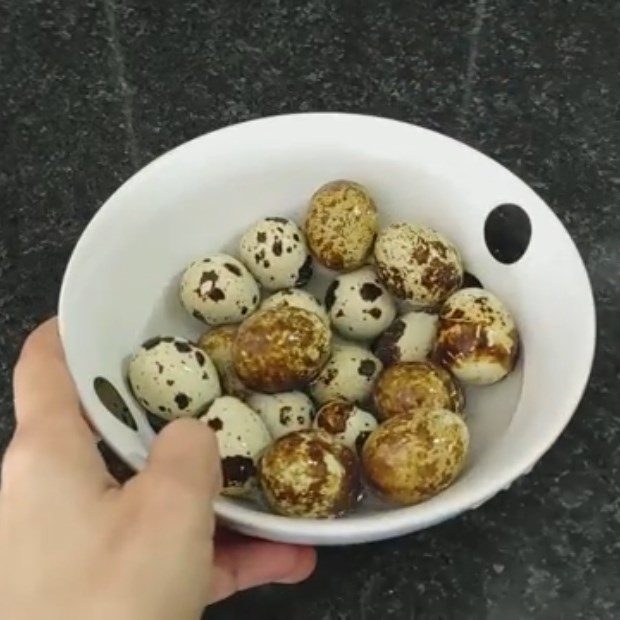
-
Prepare the pickled ingredients for serving
Put another pot on the stove with 150ml of vinegar, 100ml of water, 4 tablespoons of sugar, and 1/2 teaspoon of salt, and cook over low heat for about 3 – 5 minutes until the sugar dissolves, then turn off the heat and let it cool.
Next, gradually add 2 food storage jars filled with sliced chili and minced garlic, while also adding the vinegar mixture just cooked to cover the ingredients.
Finally, cover the jars and place them in the refrigerator for about 1 day.
.jpg)
.jpg)
.jpg)
.jpg)
-
Bone broth
Next, you place a pot on the stove with 5 liters of water and the cleaned bone and ribs, and proceed to simmer over medium heat for about 50 – 60 minutes.
When you see the broth has formed bubbles on the surface, use a ladle to skim it off, while reducing the heat to low, and continue simmering for another 50 – 60 minutes.
After that, skim off the foam again, then season with 2 teaspoons of salt and 1 dried squid that has been grilled, and continue to simmer for another 8 – 10 hours.
Finally, turn off the heat, and remove all the bones, ribs, and dried squid, letting the broth sit for about 1 – 2 hours for the sediment to settle at the bottom, only taking the clear water from the top.
.jpg)
.jpg)
.jpg)

-
Cooking the hủ tiếu broth
You take a new pot for the bones, dried squid, bone broth, and 2 white radishes that have been cut, place it on the stove and cook over medium heat for about 30 minutes.
Next, you season with 1 teaspoon of salt, 1 teaspoon of sugar, and 3 tablespoons of fish sauce, stir well, then taste and adjust the seasoning to your liking.

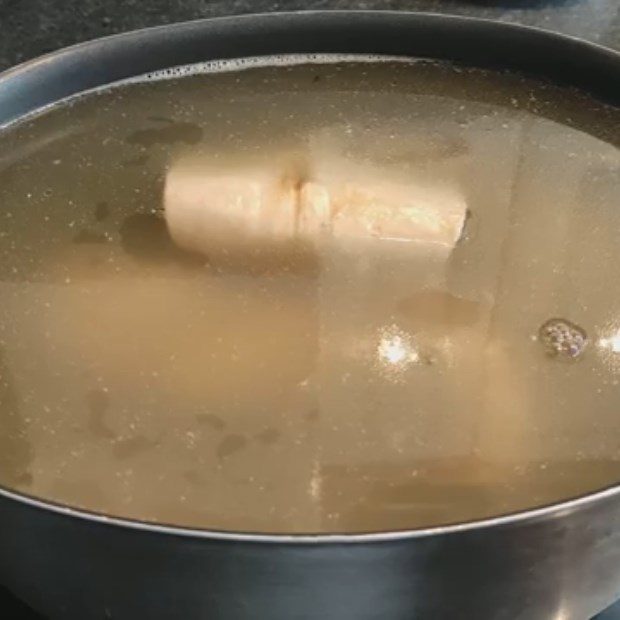
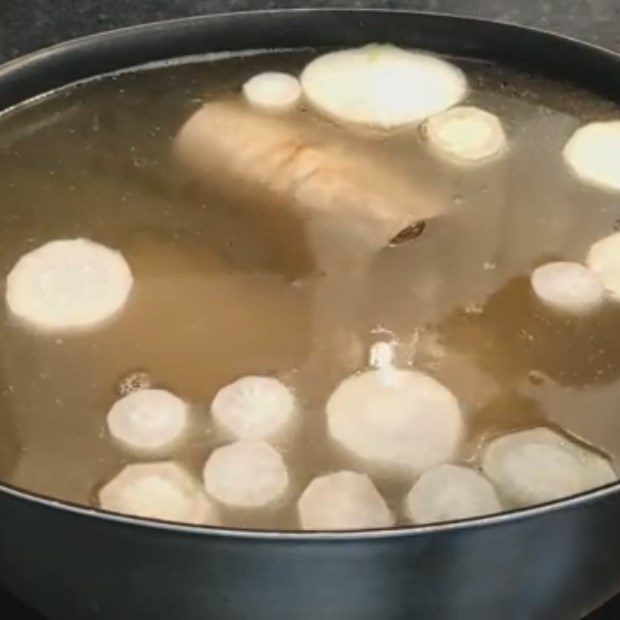
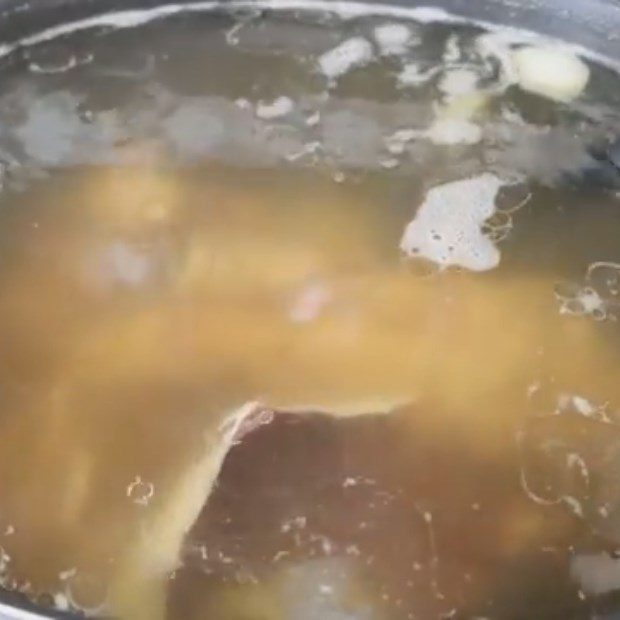
-
Making the sauce (to taste)
Place a pot on the stove with 8 tablespoons of water, 7 tablespoons of sugar, 3 tablespoons of fish sauce, 10 tablespoons of soy sauce, 3 tablespoons of ketchup, 3 tablespoons of oyster sauce, and 1/2 tablespoon of salt.
Stir well with a spoon and cook for about 5 – 7 minutes. When the sauce thickens, add 3 tablespoons of fried garlic and 3 tablespoons of fried onion, stir well, then season to taste and turn off the heat.
.jpg)
.jpg)
.jpg)
.jpg)
-
Blanch the noodles and cut the meat
You place another pot on the stove with 500ml of water and bring it to a boil over high heat. When the water boils, add 1 pack of dry noodles and blanch for about 5 minutes. When the noodles are soft, turn off the heat, and remove the noodles to a basket to drain.
Then, you take the pig’s trotters, pig’s tongue, pig’s heart, and pig’s liver out, and use a knife to cut them into thin slices for eating.
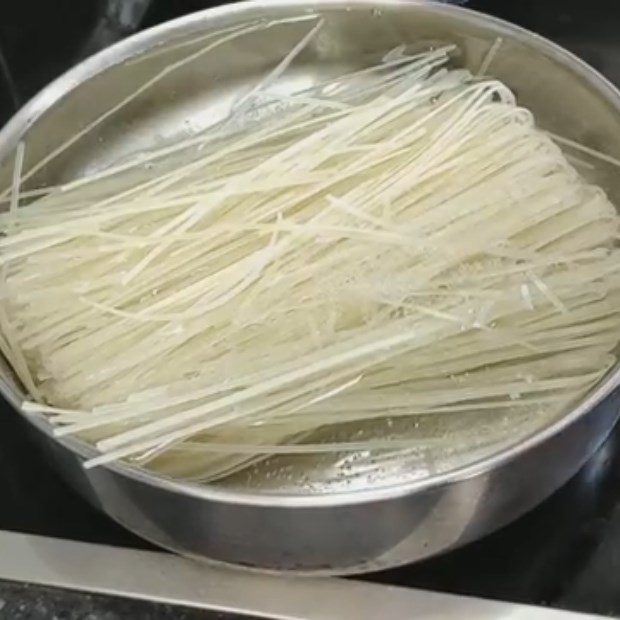
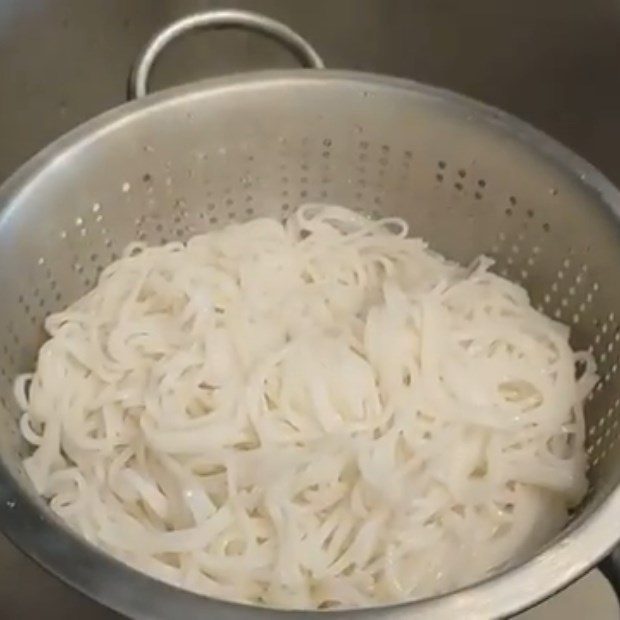

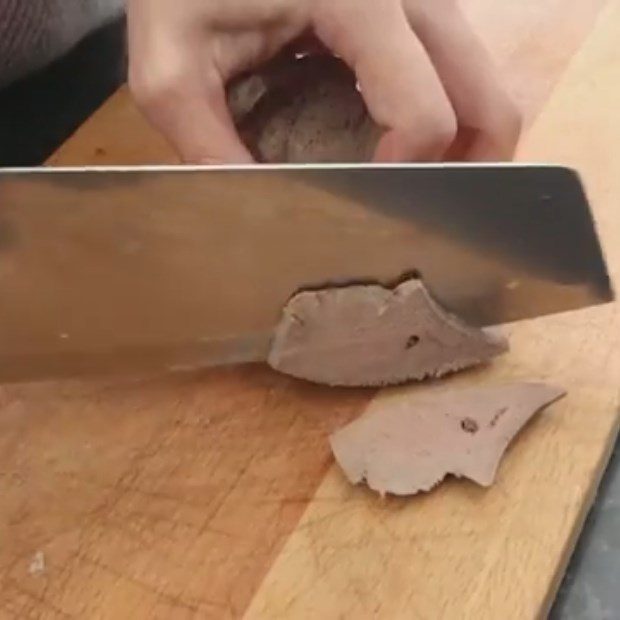
-
Completion
Finally, take a bowl and add a little of the blanched noodles, fresh shrimp, pig’s tongue, pig’s liver, pig’s heart, minced pork, green onions, fried onions, and a little broth to finish.


-
Finished Product
With this dish, you can enjoy both wet and dry hủ tiếu. For dry hủ tiếu, you blanch the noodles, then add the accompanying dishes on top, drizzle the sauce over, and mix well. Serve with a bowl of broth and pork knuckles from simmered bones and hocks.
Nam Vang hủ tiếu from Cambodia features a clear broth that is also fragrant. Especially, the noodles are chewy, combined with tender, sweet pork, along with ingredients like pig heart, crispy and chewy pork tongue, and fresh, sweet shrimp, making it truly appetizing.
When eating, you can dip it with a bowl of spicy chili soy sauce along with raw vegetables and pickled garlic and chili to enhance the flavor of the dish.
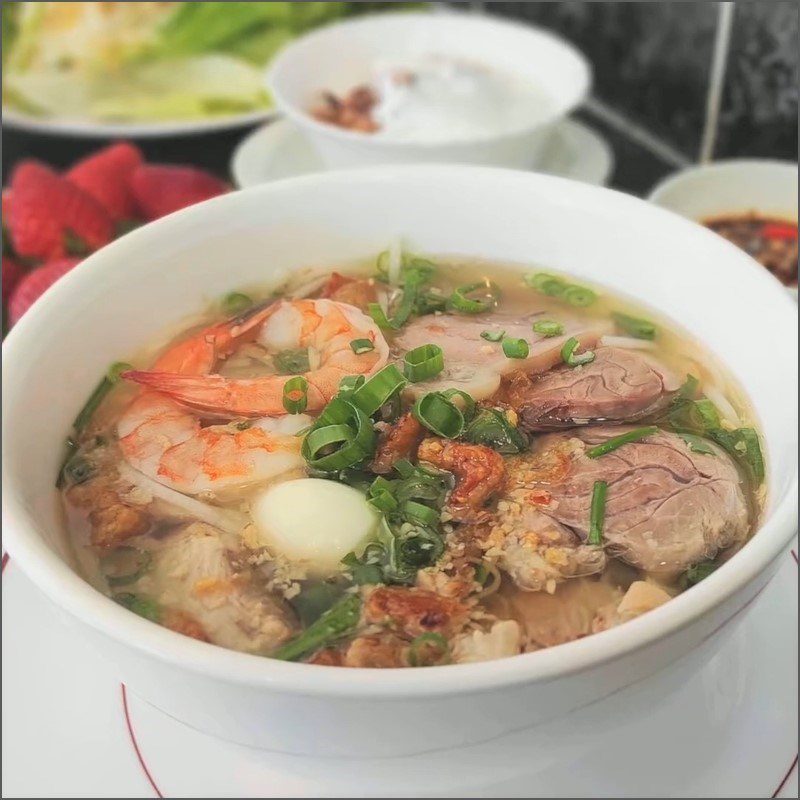



What are the characteristics of authentic Nam Vang noodle soup from Cambodia?
Nam Vang noodle soup – a familiar dish in Vietnam, actually originates from Nam Vang, prepared by ethnic Chinese Cambodians and Khmers. Over time, it has been adapted in Vietnam to suit Vietnamese tastes better.
The authentic Nam Vang noodle soup from Cambodia will include all ingredients such as pig heart, pig liver, pig tongue, and pig trotters, and it is especially essential to have minced pork served with it; depending on personal preference, additional ingredients such as squid, shrimp, quail eggs, beef balls, etc., can be added.
The broth is simmered thoroughly from bones and pig trotters, bringing a sweet and appealing taste, although the preparation time is quite long and complicated, the result is incredibly rewarding. A special feature of the Nam Vang noodle soup from Cambodia is that it is always served in two versions: dry and soup.
For the dry noodle soup, it is common to order an extra bowl of soft-cooked pig trotters to eat with it. The dry noodle soup is accompanied by a soy sauce (dark soy sauce) and garlic oil to enhance the dish’s flavor. The soup version must have all the toppings, and the broth must be really hot, clear, and sweet from the simmered bones.
The dish is often served with various herbs such as lettuce, chives, bean sprouts, and celery along with seasonings like satay chili, chili sauce, black sauce, and pickled garlic chili to make the dish delicious, stimulate the taste buds, and achieve the best flavor.
See more:
With the how to cook Cambodian Nam Vang noodle soup that is full of deliciousness above, surely anyone who has tasted it will never forget the wonderful emotions that the dish’s flavors bring. Don’t hesitate to try it right away!
